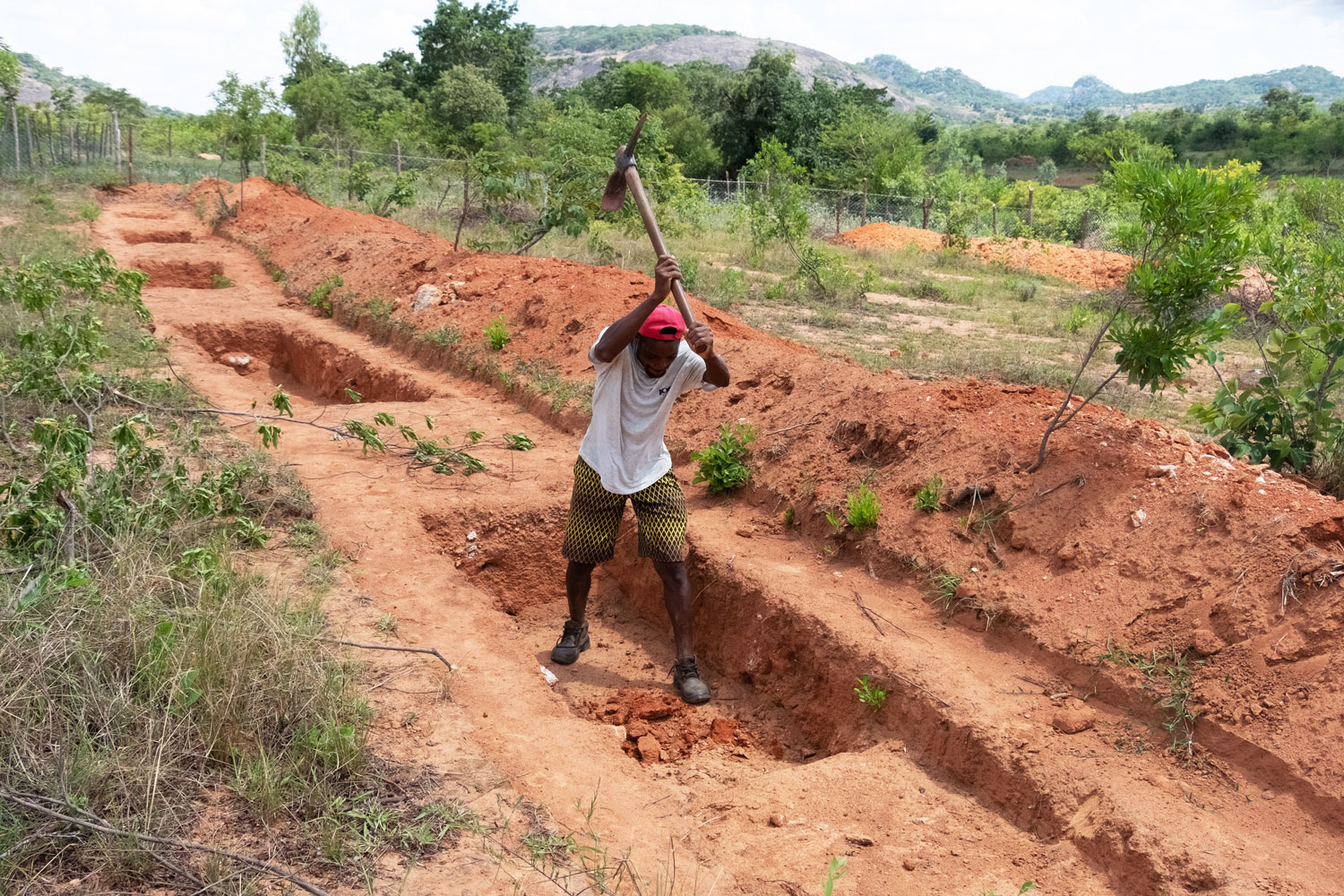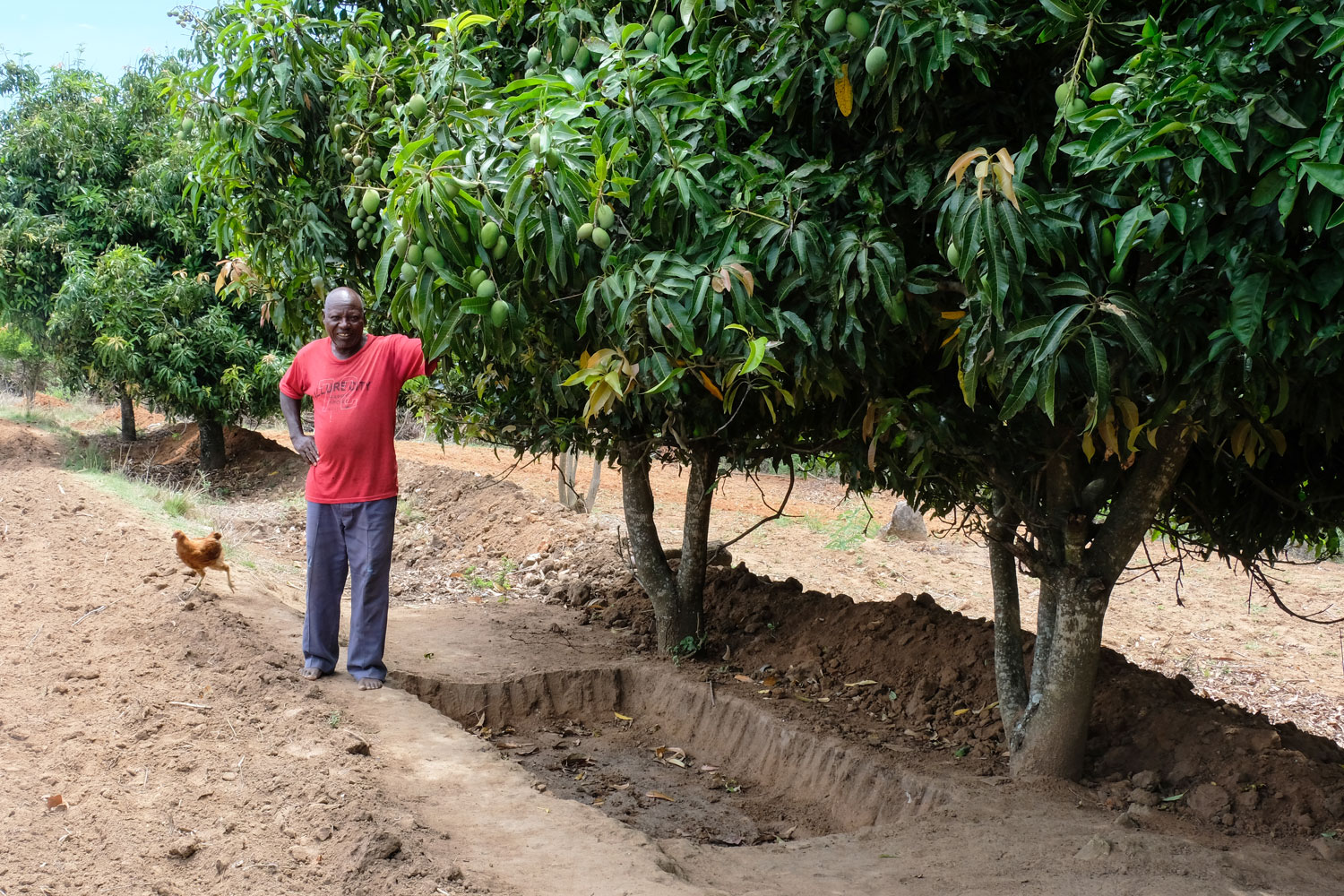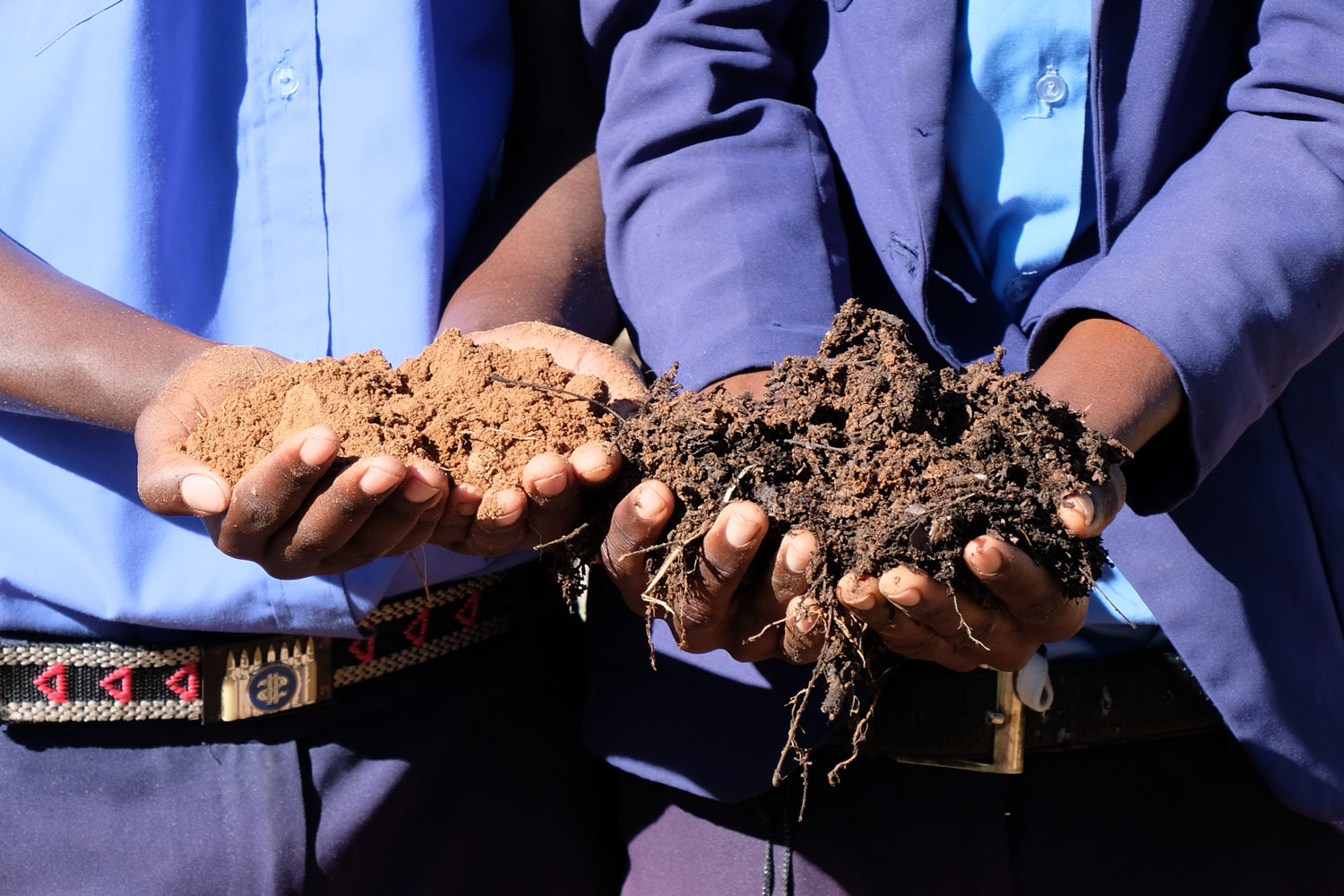"You must plant the rain before you plant a seed or tree."
Zephaniah Phiri Maseko, Zimbabwean farmer and rainwater harvesting visionary
Zimbabwe has suffered greatly from multi-year droughts that devastated agriculture across much of southern Africa. For years, the rainy season in Zaka produced little rain, and lasted only 3 to 4 months. When the rains come they are often heavy but brief. Most of the rain runs off the dry ground, carrying precious topsoil with it. The resulting poor quality, dry soil grows little and is hard-packed, making the runoff even worse – a classic vicious cycle. Rainwater harvesting and conservation combined with biointensive agriculture are working together to reverse this cycle.
Communities have been taught a variety of strategies to capture rainwater, revitalize their soil, prolong the growing season of their gardens and trees, protect their soil and crops from flooding, and even raise local groundwater and well levels. A vision of the transformative impact of rainwater harvesting has inspired hundreds of households across rural Zaka, Zimbabwe to dig kilometres of trenches, diversion contours, infiltration pits, and in-ground water tanks, and to recycle their grey water. Combined with biointensive methods of nourishing the soil and a widespread tree-planting program, we are seeing the landscape renewed and restored.

Rainwater harvesting is hot, hard, dusty work – but people are enthusiastically digging because they see the benefits.

Kudakwashe cares for 3 orphaned children in his home. He has dug trenches and infiltration pits throughout his property. Rather than running off, the rainwater now soaks into the ground and nourishes his avocado trees well beyond the rainy season.

Water runs off the dry soil on the left, but the composted and nourished soil on the right soaks it up like a sponge.
